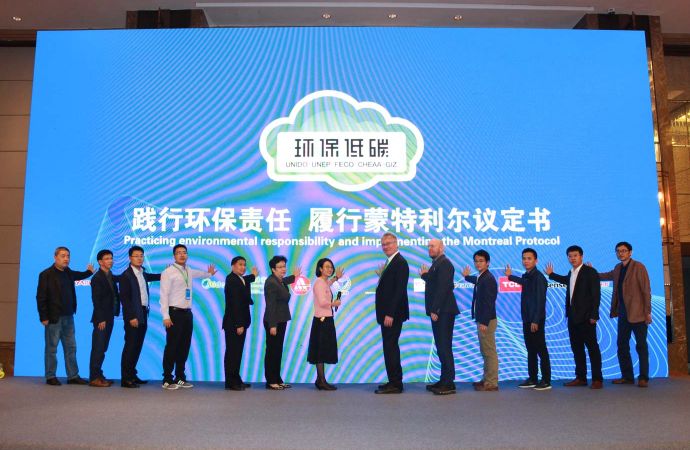The EU-funded project, wrapping up on June 14, has helped clear barriers to uptake of hydrocarbons as a refrigerant.

The EU-funded LIFE FRONT project, which aims to remove barriers to adoption of hydrocarbon refrigerants within the refrigeration, air-conditioning and heat pump (RACHP) industry, has populated its leak-hole size databases with more than 1,000 data points covering a variety of system types, ages and installations.
That was one of the conclusions offered during a free webinar on June 3 to officially present the three-year project’s outcomes as it finishes operating on June 14, including key aspects on how to safely raise charge limits of flammable refrigerants. The webinar had 140 registrations and 72 live participants. (shecco, publisher of this website, is a participant in the LIFE FRONT project.)
Last month, LIFE FRONT released a new report with recommendations on how to safely raise hydrocarbon charge limits.
At the webinar, Daniel Colbourne, Engineer at German Consulting Firm HEAT GmbH and Lead Technical Expert of the LIFE FRONT project, provided an update on the leak-hole size databases for small and large systems. LIFE FRONT has developed Europe’s largest leakage size database, using real figures to determine the extent to which it is safe to operate with bigger amounts of flammable refrigerants.
“The main objective of these databases is to address the lack of data that currently leads to worse-case assumptions for refrigerant charge size limits under EU standards,” explained Colbourne. He reiterated that the correct determination of hole size is essential for handling flammable HC refrigerants. If it’s too small, the potential hazard can be underestimated while if it’s too large, the risk is over-engineering and over pricing.
Collin Bootsveld, Project Engineer at the Colruyt Group, shared the end-user perspective, explaining how the LIFE FRONT project results are useful for the sector by drawing on personal experience in working with hydrocarbons. Bootsveld concluded that, in his experience, most leaks were very small and larger leaks were usually caused by human intervention.
René van Gerwen, Managing Director of engineering company Entropycs, and Refrigeration Expert of LIFE FRONT, presented on the project’s inputs to standardization work and how these results will impact the sector in future. “Simple charge limits are too rigid – this blocks innovation,” he explained. “Continued focus on standard improvements is required, in view of removing barriers for A3 flammable refrigerants.”
The webinar was moderated by Pauline Bruge of shecco, LIFE FRONTProject Coordinator. Bruge summarized the project’s key objectives and what was achieved. “The project results are important in helping to remove barriers that cause unnecessary costs and delay the market entry of much needed sustainable cooling and heat pump products,” she said.
She defined the project’s objectives as:
- Support the EU and international standardization process for flammable refrigerants.
- Reduce safety risks from improved system design for air-conditioning, refrigeration and heat pump applications using flammable refrigerants.
- Increase availability of alternatives to replace HFCs.
- Engage in technology capacity-building for EU equipment manufacturers.
- Remove non-technological knowledge barriers.
- Improve Europe’s competitiveness for RACHP equipment using non-fluorinated refrigerant alternatives.
- Support an effective and timely achievement of the EU 2030 climate targets.
For more information on the project and its achievements, visit http://lifefront.eu
Related stories



